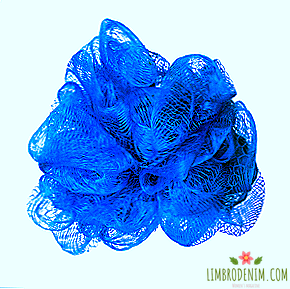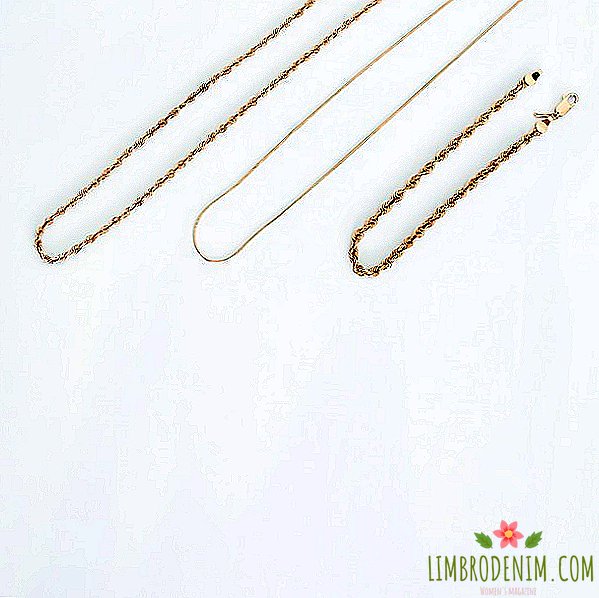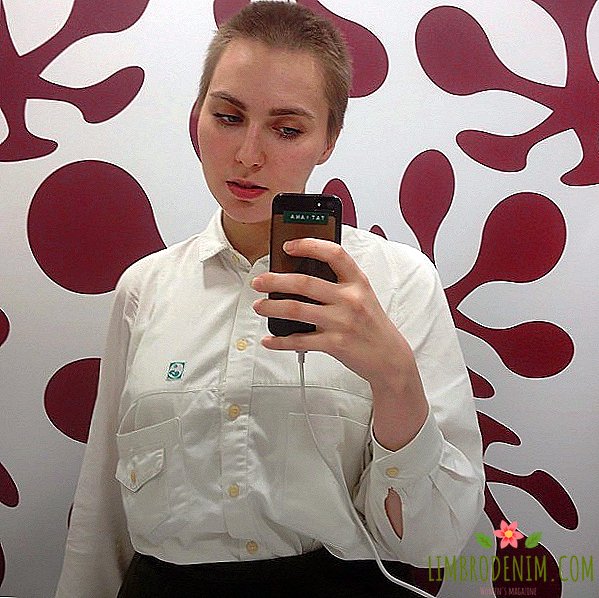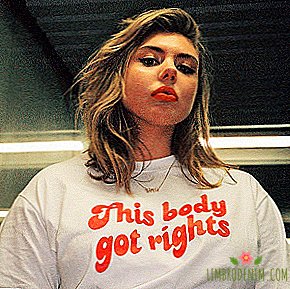5 subcultures that influenced modern fashion
The influence of subcultures on fashion It is impossible to overestimate - you shouldn’t once again talk about the role that fashion, glam rock, punk and Vivienne Westwood 70s, hip-hop and buffalo 80s or 90s grunge played in it. From the mid-1960s to the present day, many designers have been inspired by the style of individual communities united by cultural code, ideology and appearance (the fashion industry has always tried to unite people in a similar way). Now went to the course and quite unobvious examples. We talk about not the most famous, but influential subcultures - from Mexican cholo to adherents of the psychedelics of the 1970s - and how they influenced today's fashion trends.
Cholo


The roots of the Cholo subculture are in the young generation of immigrants from Mexico who settled in the United States a generation or two ago. The term was originally used to refer to the local population of South and Central America, but in the 1960s, the working class of Mexicans living in the States and representatives of their civil rights movement Chicano Movement came to be called "cholo". Actually, at the same time, in the 1960s, the designation “cholo” was picked up by criminal youth and began to be used for self-identification — this is how an independent subculture was formed.
At first, only guys belonged to cholo, they wore baggy pants, alcoholic T-shirts and sports sneakers (still among the popular cholo-brands Dickies, Ben Davis and Lowrider), but gradually the girls picked up the style. In fact, the female version of cholo differs only in make-up: arched tattooed eyebrows, lips surrounded by a dark pencil, cat eyes, plus a characteristic hairstyle with a high hair over his forehead and a manicure that Lena Lenina herself would envy.
Cholo as a subculture took a lot from the underground hip-hop, so the chola girls for a sweet soul hang themselves with gold trinkets of varying degrees of severity (but the guys, by the way, not really). Gradually, from the urban culture of low-income areas of Los Angeles and San Diego, the Cholo subculture became mainstream, picked up first in pop culture (Fergie and Gwen Stefani were among the first), then in fashion. As a result, stylist Mel Ottenberg sculpts chola girl from Rihanna, Dazed & Confused magazine makes cholo shots, and designers devote chola girls to the collection to recall at least Rodarte and Nasir Mazhar spring-summer 2014 season.
LGBT hip-hop


LGBT hip-hop, or, as it is also called, homo-hop, appeared at the dawn of the 1990s in California. Initially, homo-hop was not positioned as a separate musical direction, but served to denote the LGBT community in the hip-hop scene. The term itself was introduced by Tim'm T. West, a member of the Deep Dickollective team. Announcing himself in the 1990s, Homo-hop was quiet at the beginning of the new millennium (with the exception, perhaps, of the "Pick Up the Mic" documentary with the participation of the main Homo-Hop artists of our time), to be reborn with the arrival of the 2010s.
The new generation of hip-hop artists not only did not hide their unconventional sexual orientation (Frank Ocean became one of the first African-American performers who made a coming out, and Azilia Banks does not hide her bisexual inclinations), but also actively, often in texts, supported LGBT -motion. It is noteworthy that initially Homo-hoppers, in general, did not have any special distinctive signs in terms of clothing, and quite straight artists flirted with drag culture: from Grandmaster Flash and the Furious Five to World Class Wreckin 'Cru. Nevertheless, some conservatives are certain that skirt-makers Kanye West and Trinidad James are the result of the spread of the gay movement in the hip-hop ranks, and Rihanna twerking in microbirds and bicycles of Le1f is no worse — a living example of discrimination of masculinity in general and in hip-hop in particular.
In recent years, men's fashion has generally sought to gradually erase gender boundaries - starting with the main conductor of street culture in the luxury industry, Ricardo Tisci, who led the male models to the catwalk in skirts to the latest men's shows. For example, Loewe under the leadership of the new creative director Jonathan Anderson or the absolutely beautiful Christophe Lemaire, after watching which girls make up impressive wishlists.
Casuals


Casuals formed in the British subcultural environment in the late 1980s, when football hooligans abandoned fan uniforms in favor of designer clothes and expensive sportswear in order to attract the attention of the police as little as possible. The style that began to be exploited by the casuals appeared much earlier - during the times of the teddy-fighting of the 1950s and the mods of the early 1960s. Collecting and digesting the subcultural heritage of their predecessors, the casuals brought out their own visual formula: Fiorucci jeans, sneakers adidas, Gola or Puma, Lacoste polo shirt and Gabicci cardigan.
It is believed that London hooligans were introduced to the European street fashion by Liverpool football club fans who accompanied their favorite team at all European levels and brought heaps of expensive sports brands (at that time adidas or Sergio Tacchini) from the trips. In the late 1990s, football fans are gradually moving away from the original casual image, and expensive designer brands, in turn, remove things associated with casuals from sales (in particular, Burberry faced a problem with their proprietary cell).
The next movement began to rise from the mid-2000s, and nowadays casuals are not even always devoted football fans, but the bow is the same as it was at dawn: skinny jeans, a Palace t-shirt, the classic Reebok model. This image (let's designate it as "laconic and neat") can be seen today on Topman mannequins and on Burberry Prorsum and Paul Smith catwalks, and in a subcultural context, casual casual is called a substitute for exploiting the ultra-muscular hertirage and sloppy hipsterism.
Healthy lifestyle


We have already written more than once about how great the influence of sports is on modern fashion: things that were originally intended for training in a fitness club now fit perfectly into the urban environment, and heels give way to comfortable shoes like sneakers, sneakers and slip-ons. The history of the interpenetration of fashion and sport can be observed from the mid-19th century: in 1849, the Water-Sure Journal published an article urging women to abandon heavy crinolines that were fashionable at the time in favor of clothing that would give more freedom of movement. Two years later, the well-known feminist Amelia Blumer appeared in public in a knee-length skirt and wide pants like Turkish trousers, later named after her as bloomers.
However, the bloomers survived the real boom only in the 1890s, when women began to master cycling, which was then popular. Further, the echoes of sporting themes appeared in the collections of both Gabriel Chanel (the same jersey material and models inspired by the tennis form), and Elsa Schiaparelli (her collection Pour le Sport), and later - Emilio Pucci (clothing for skiing), Yves Saint Laurent (suit for hunting, in particular, the jacket of Norfolk), Azzedine Alaya and Roy Halston (top like the top of a bikini swimsuit), Karl Lagerfeld (1991 spring-summer collection dedicated to surfing for Chanel), Donna Karan (dresses of the beginning of 1990- x of neoprene) and many others.
Separately, in this chronology it is worth highlighting the 1970s, the era when sport became an important and fashionable part of lifestyle. By the end of the decade, everyone was literally obsessed with aerobics and jogging, not only for reasons that were objective for health, but also because it was considered sexy, and fashion in turn became the platform where sport and sex merged into a single whole. So, in the sphere of fashionable design, fleece, lycra, mahr, polyurethane, parachute fabric were actively used, and girls wore plastic visors as a fashion accessory.
Since the beginning of the new century, sport has still been passing through the fashion collections almost every season, but another serious wave of popularity came in 2012, which many people associate, in particular, with the London Olympics. Collaboration of sports brands with fashion designers began to appear with enviable popularity: adidas with Stella McCartney, Jeremy Scott and Mary Katranza, Nike with Ricardo Tishi, and the podiums were under the obvious influence of sports style - it’s enough to remember the collections of the same Stella of FW 2012 seasons / 2013 and SS 2013, Alexandra Wang for his own brand in the SS12 season and this spring for Balenciaga, Givenchy as the main promoter of sweatshirts of all stripes, Prada and Emilio Pucci of the SS14 season. In general, the list is endless. Obviously one thing - all together led to the fact that today sportswear is massively perceived inseparably from everyday life.
Psychedelia

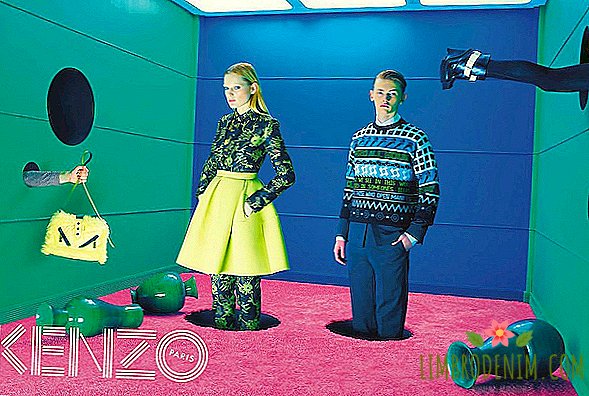
Psychotropic drugs became part of the subcultural life in the United States and Great Britain in the mid-1960s: in general, the psychedelic ideology was expressed in opposing the Western world of consumerism and, naturally, trying to escape from reality. After the “Summer of Love” that happened in 1967, the counterculture finally took shape in the hippie movement, which elevated not only the principles of peace and love, but also the widespread use of psychotropic substances, such as LSD.
Staying in a state of altered consciousness, in particular, implied hypertrophied perception of colors, textures and images and significantly influenced the formation of a typical hippie image and graphics development: acid shades, smooth, as if flowing silhouettes, textured fabrics were used. By the way, the popularity of the traditional Indian paisley pattern was explained in the same way - at the time of the drug movement, the colorful "cucumbers" were folded into funny pictures. In short, all the techniques in dressing served to make psychedelic experiences even more spectacular.
The main conductors of psychedelic fashion were the Paraphernalia boutiques in New York and Granny Takes a Trip in London, where Thea Porter, Zandra Rhodes, Jean Muir and Ozzie Clarke were sold. The legacy of psychedelics can be considered the raver movement of the late 1980s with its acidic colors T-shirts, hell Tai-Dai and plastic jewelry - all these tricks at one time took into service both Franco Moschino and Gianni Versace.
Psychedelic-aesthetics is also not spared the fashion of the modern times - mostly in the form of neon colors, which since 2007 began to appear in collections with an enviable constancy. However, not only they: if you think about it, so beloved (today, however, not very much) kaleidoscopic digital prints are nothing more than echoes of the 1970s psychedelic-friendly patterns, as well as the return of the things of tai-dai and the style of the 70s generally. In particular, the widespread use of optical prints in the fall collections of this year.
